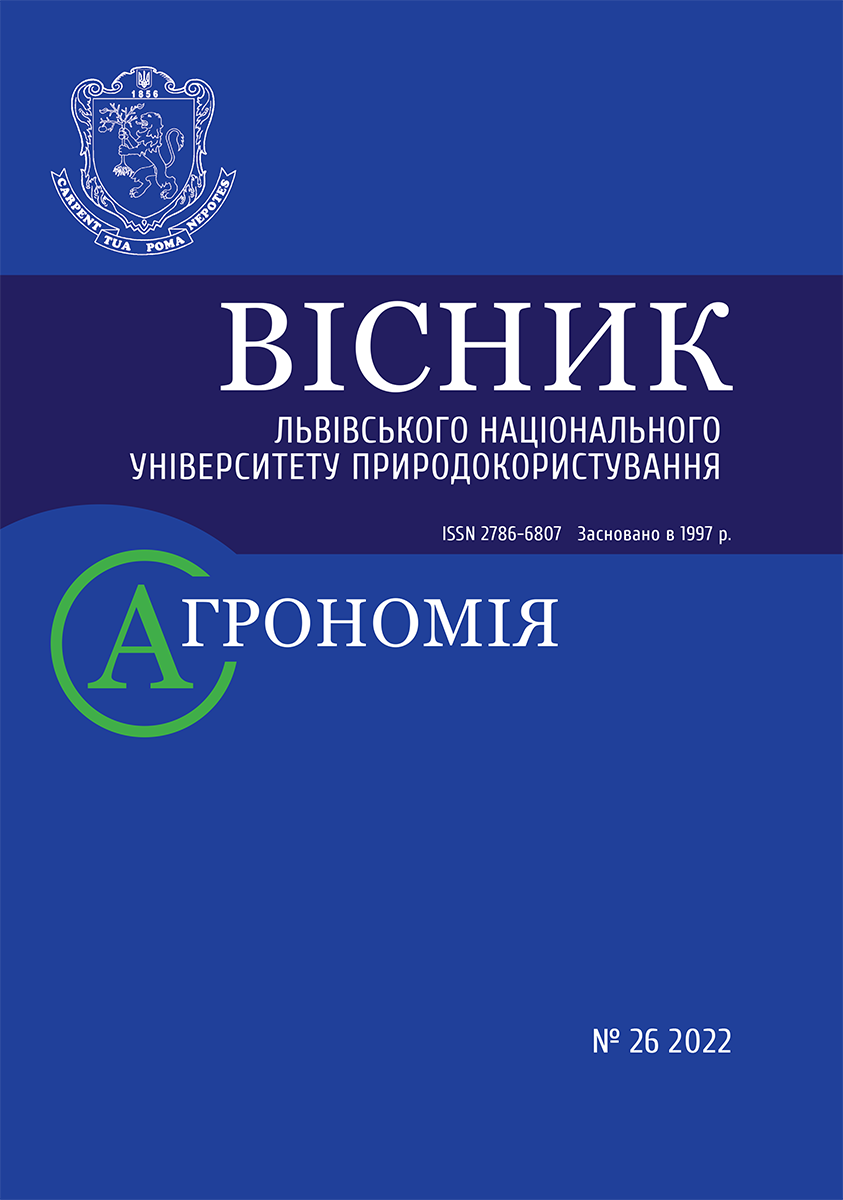IMPACT OF FEEDING COWS WITH RAPESEED ON THEIR MILK YIELD, QUALITY AND TECHNOLOGICAL CHARACTERISTICS OF MILK AND DAIRY PRODUCTS
DOI:
https://doi.org/10.31734/agronomy2022.26.201Keywords:
rapeseed, feeding, cows, milk, dairy productsAbstract
The article presents findings of the research on the impact of feeding cows in the first lactation phase with the crushed rapeseed on their milk yield, organoleptic, physical and chemical properties of milk, yoghurt and farm cheese.
While conducting the experiment, the researchers marked a negative energy balance in the first phase of cow lactation. It forced an intensive exploitation of body tissues to synthesize milk that happened simultaneously with a rapid reduction of animals’ live quality, fall of milk productivity, disturbance of reproductive functions, and could finally cause development of ketosis, acidosis, fatty degeneration of the liver. It is often a problem to provide cows with the required amount of metabolic energy in that period, as it is mostly obtained by ruminants with carbohydrates. Therefore, the cows’ demand for energy is partially supplied due to fat-containing fodder. Introduction of such fodder into cows’ diet can increase its energy value without violating the ratio of coarse and concentrated fodder.
To conduct the experiment, the researchers used cows of Ukrainian black-spotted dairy breed in the first lactation phase during the winter stall period. The animals were divided into two groups by the principle of analogues. Animals of the first group were fed according to the typical diet. A share of grain mixture in the diet of the second group animals was substituted with crushed rapeseed varieties not containing erucidic acid and having a low content of glucosinolate. Diets of both groups were balanced by their energy content and shares of separate elements.
Use of rapeseed in cows’ diet contributed to a better milk yield, higher content of protein and lactose in milk, and outcome of milk fat, protein and milk sugar during the studied period.
Feeding animals with rapeseed made no negative impact on the organoleptic properties of milk, as well as yoghurt and farm cheese produced of it.
The yoghurt, made of the milk of cows, fed with rapeseed, had thicker consistency and produces less serum while storing.
Properties of farm cheese, produced of the milk of cows, fed with rapeseed, complied with all physical and chemical indicators of the State Standard requirements.
References
Butler W. R., Smith R. D. Interrelationship between energy balance and postpartum reproductive function in dairy cattle. J. Dairy Sci. 1989. Vol. 72. Р. 767–783.
DSTU 4343:2004 Yogurts. General technical conditions. Kyiv: State Committee for Technical Regulation and Consumer Policy (Derzhspozhyvstandart) of Ukraine, 2005. 9 p.
DSTU 4554:2006 Sour milk cheese. Specifications. Kyiv: State Committee for Technical Regulation and Consumer Policy (Derzhspozhyvstandart) of Ukraine, 2007. 9 p.
Effect of sunflower oil supplementation on methane emissions of dairy cows grazing Urochloa brizantha cv. marandu / B. Mata, Silva et al. Animal Prod. Sci. 2017. No 57. P. 14311436.
Feeding norms, rations and nutritional value of feeds for different species of farm animals: directory / H. V. Provatorov, V. I. Ladyka, L. V. Bondarchuk et al. Sumy: TOV VTD «Universytetska knyha», 2007. 488 p.
Handbook of complete feeding of farm animals / Edited by I. I. Ibatullin, O. M. Zhukorskyi. Kyiv: Ahrarna nauka, 2016. 336 р.
Including essential oils in lactating dairy cow diets: effects on methane emissions / S. Meale et al. Anim. Prod. Sci. 2014. No 54 (9). P. 12151218.
Internal diseases of animals / V. I. Levchenko, V. V. Vlizlo, I. P. Kondrakhin et al. Edited by V. I. Levchenka. Bila Tserkva, 2015. Vol. 2. 610 p.
Lychuk M. H., Slivinska L. H., Paska M. Z. Liver functional status of highly productive cows in subclinical ketosis. The animal biology. 2017. Vol. 19. No 4. P. 125.
Petit H. V., Côrtes C. Milk production and composition, milk fatty acid profile, and blood composition of dairy cows fed whole or ground flaxseed in the first half of lactation. Anim. Feed Sci. Technol. 2010. Vol. 158. P. 36–43.
Rabelo E., Rezende R. L. Effects of transition diets varying in dietary energy density on lactation performance and ruminal parameters of dairy cows. J. Dairy Sci. 2003. No 86 (3). P. 916–925.
Vovk S. O., Pavkovych S. Ya. Protected lipids and fatty acids in the diets of cattle. Bull. Agric. Sci. 2016. No 4. P. 48–51.


